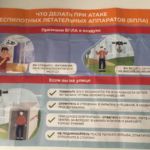Matrix of Russian history

From the very beginning of the Moscow principality existence, the main concern of its rulers was the expansion of their possessions. The entire history of this state formation is an ongoing process of aggression against the surrounding countries and peoples. Кол Шәриф tells about this.
The largest territorial acquisition of the Moscow princes in the XV century were Novgorod lands. After the third Moscow-Novgorod war, the troops of Moscow prince Ivan III conquered the Novgorod Republic.
Together with the pro-Moscow Archbishop Theophilus, fifty noble Novgorodians were arrested. By order of Ivan III, they were tortured and then executed. Following them, another hundred people were seized, who, after being tortured, were also killed. The grand prince confiscated all the property of the executed to his own treasury.
The repression did not end there. Moscow government began the mass expulsion of Novgorodians to a foreign land. First of all, a thousand families of the wealthiest Novgorodians were sent to different cities of Muscovy. Their property again went to the treasury of Ivan III. Still “a few days later, Moscow army drove more than 7,000 families to Moscow in the winter, in the cold, not allowing them to prepare, not allowing them to take anything with them; their houses, their real and movable property – everything became the property of the grand prince. Many of those exiled died on the way; the rest were settled in different cities, towns and villages of Moscow land, and instead of them Muscovites were sent to the Novgorod land to settle.”
Ivan III made another blow to Veliky Novgorod in the winter of 1483/84. About thirty noble citizens were accused of treason. Tortures, prisons, exiles followed… The grand prince, as before, wrote off the huge fortunes of the richest Novgorodians for his own use. The free republic disappeared. And the places of the Novgorod posadniks and the selected thousands were taken by numerous Moscow governors, butlers and clerks.
After that, some of the most disloyal boyars were deprived of their lands and, together with their families, were taken to Moscow and left to live there. At the same time, Novgorod veche bell was also taken away – not just a way to call the people to the next meeting, but the symbol of the republic and freedom. Their lands were filled with landless Moscow service people.
Repressions against the freedom-loving Novgorodians continued in the future. In 1488, about eight thousand boyars, merchants and other eminent citizens were forcibly evicted from Novgorod and sent to settle in different regions of Moscow principality. Moreover, those who adhered to the pro-Moscow orientation and helped Ivan III to establish his power in the Novgorod land were also subjected to persecution.
The deportees were settled in remote cities, a small number of people in each, in order to divide and “dissolve” among the locals – in Vladimir, Rostov, Murom, Kostroma, etc. In new places, they, as a rule, became ordinary service people.
Novgorod international trade was a tasty morsel for Moscow. Ivan III decided to take it completely into his own hands. In what way? Without tricks. He ordered to evict all the merchants from Novgorod, and to resettle Moscow merchants in their place. What came of it? Just what could have happened. Moscow merchants who traded in the expanses of Rus were accustomed to relying on the help of the all-powerful grand prince. In Novgorod, Muscovites behaved as they would in a town subject to Moscow, and began to oppress Hanseatic merchants.
Ignoring the petitions from Hansa, Ivan III treated German merchants as if they were the guilty serfs. In 1494, all Hanseatic people who were in Novgorod at that time were arrested and thrown into prison. All their property and goods were taken away from them and immediately sent to Moscow. Hanseatic trading yard was confiscated and closed.
The incident caused shock in Germany. Hansa suffered huge losses, and most importantly, in a minute and, from the point of view of the prudent Germans, completely without reason, lost all the centuries-old trade ties with the East, which Moscow cut as if with one blow of an ax.
The break of trade relations with Hansa hit Moscow itself very quickly and painfully. It lost considerable income from trade duties, as well as Western goods, that could not be replaced with anything. Trade relations with Hansa were restored only after the death of Ivan III. His successor, Vasily III, allowed the reopening of a German trading yard in Novgorod. However, the decline of Novgorod was already irreversible.
Pskov helped Moscow conquer Novgorod. This happened because of another conflict, which at that moment arose between the two republics. Instead of helping the Novgorodians defend their freedom, the Pskovites entered into an alliance with Moscow.
Muscovites, according to the custom that had already developed by that time, repaid their allies by annexing their lands to their possessions.
At first, the Pskovites, recognizing Ivan III as their sovereign, called themselves his serfs in words, but very quickly they turned into slaves in deeds. The grand prince, placing Muscovites the rulers of Pskov, evicted the Pskov nobility deep into Muscovy. He settled Pskov region with people from other lands.
This is the essence of Russian domestic and foreign policy. Such is the attitude of the Russian authorities towards their own people, and even worse – towards those peoples who have found themselves under its rule.


Leave a Reply